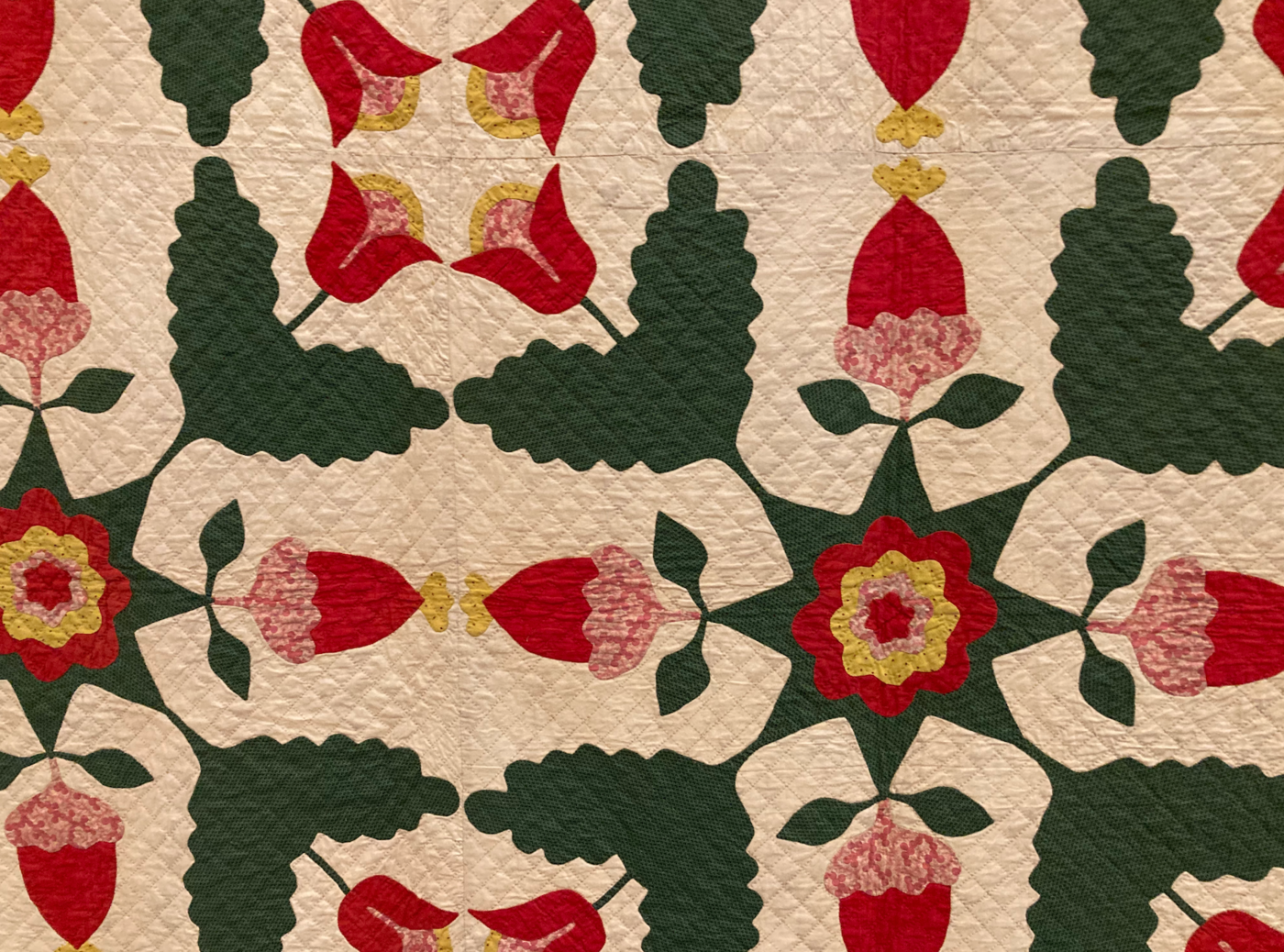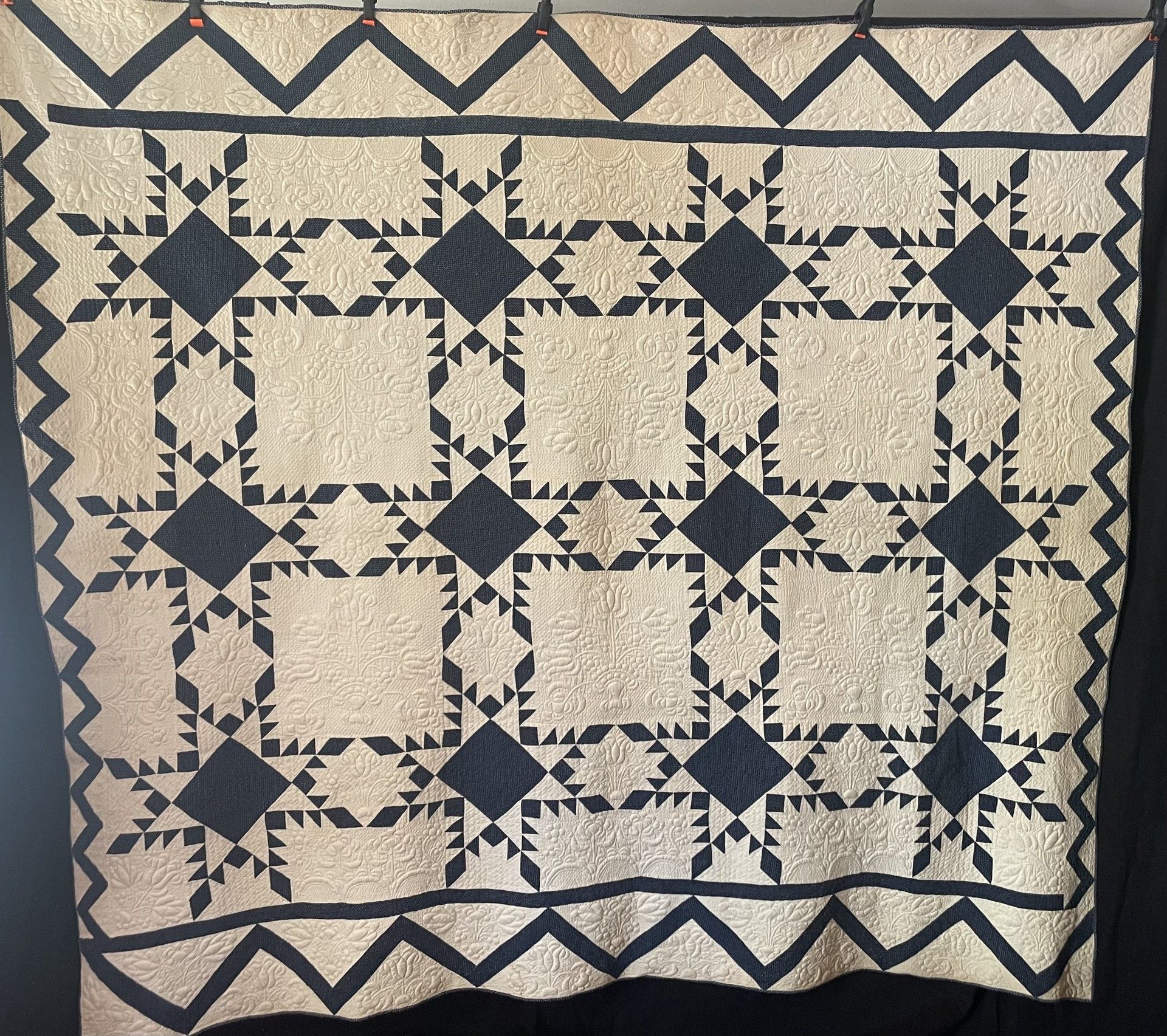Quilt History Snippets - June 2024
What: Review of Uncoverings 1992, Volume 13 of the Research Papers of the American Quilt Study Group, edited by Laurel Horton
Topic: From Myth to Maturity: The Evolution of Quilt Scholarship
Author: Virginia Gunn
The author of this article, Virginia Gunn, is a former editor of AQSG’s Uncoverings and at the time this article was written she was President of the AQSG Board of Directors. She was also an Associate Professor of clothing, textiles, and interiors in the School of Home Economics and Family Ecology at the University of Akron, Ohio and had well established scholarly expertise along with numerous articles published in multiple volumes of Uncoverings.
In her abstract, Gunn states that “Quilting Myths are realities of quilt history. Romantic myths have been combined with historical facts as people interpreted America’s quilting past.” That they “survive and thrive because they reflect people’s dreams, ideals, and values.” But, she notes, we must be willing to “revise past scholarship in light of new knowledge…without letting them [myths] impede interpretations based on accurate and documented facts.” [p. 192]
The article that follows includes a cogent discussion of various myths in American history, most of them familiar to all of us. She presents a realistic description of how early quilt historians attempted to explain early American quilting practices and sources, often basing their comments on undocumented theories not based on scholarly research of early American history using authoritative primary and secondary documentation. Such early commentaries became embedded in people’s understanding of our history “even though factually false.” [p. 194] Gunn gives names of individuals and publications to establish her thesis in reality. And she provides a thorough discussion of the evolution of quilt history in America. To be fair, these early commentators had little documentation to go on. Some of them and their followers were motivated by romantic notions of an American history with which they had little actual knowledge. We have the advantage of decades of scholarly research and documentation thanks to organizations like AQSG and can more easily separate myth from reality.
Gunn’s cross-discipline approach includes a list of scholarly sources from history, social-cultural historians and material culture specialists, folklorists and oral historians, quilt collectors and commentators from the 1930s forward. Most of you will recognize the names, events, and publications mentioned.
Most relevantly, Gunn notes that “the old myths persist for they contain implied or explicit morals or messages still considered pertinent today.” [p. 201] She intersperses her article with a plea to strive to separate myth from reality, that their [myth] “contributions are most positive when clearly distinguished” and that “Well-documented history is often as fascinating as legend.” [p. 202]
Finally, it is important to remember that Gunn’s article was published in 1992. The book Hidden in Plain View by Jacqueline Tobin documenting family stories from Ozella McDaniel Williams claiming that escaping slaves used quilt patterns to guide them on their escape was published in 1999. It serves as a prime example of all the precautions Gunn has provided us in her 1992 article.
If you do not have a copy of this, or any, edition of Uncoverings, check the publication list on the AQSG website to see if any particular volume is available…many still are. To access an online version of any issue of Uncoverings find the links at the AQSG website or the Quilt Index at www.quiltindex.org. As always, you can contact me at kmoore81@austin.rr.com.
Share Post




